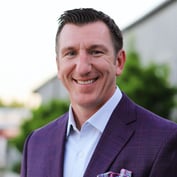The Senior Market May Be Younger
Than Many Advisors Think
A few years ago, older folks were going around joshing about whether they were “young old,” “old,” or “old old.”
Perhaps not surprisingly, how people categorized themselves had nothing to do with chronological age. People in their late 70s would respond “young old,” while people in their 50s often replied, “old.” True, they were laughing as they did so. But it is worth noting that no matter which category a person chose, he or she was still identifying with the concept of being old.
Today, it often seems it is not politically correct to use the word “old.” Yet, once people reach the age where they are mulling over where they fit on the old spectrum, it is safe to say they are part of the traditional senior market.
But how to reach that market? That is a question many in the financial services industry are increasingly asking.
The traditional senior market typically has been considered the prime target for such products as annuities, long term care insurance, IRAs and Medicare supplements, just to name a few.
There is no denying that many people in their 50s, 60s and even 70s may benefit from purchasing one or all of those products. With the exception of Medicare supplements, though, some prime targets for traditional senior products may actually be much younger.
Many financial professionals bemoan the fact that younger clientsthose in their 30s and 40soften do not have the time, energy or money to think about their senior years. That is because younger people are so caught up in the very necessary tasks of advancing their careers, buying homes and raising families.
Ironically, the best time for clients to procure insurance and financial products for their senior years is in their 30s and 40s and, some might say, in their 20s.
When we couple that with the fact that many people would like to retire earlier than the traditional age of 65, it becomes clear that the market for senior products may be younger than many people think.








 April 18, 2004 at 08:00 PM
April 18, 2004 at 08:00 PM










